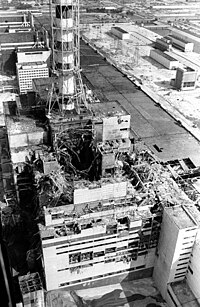
Photo from wikipedia
Abstract The EUROfusion Work Package JET3 programme, established to enable the technological exploitation of the future Deuterium-Tritium (DT) operations at JET over the next years, includes, within the NEXP subproject,… Click to show full abstract
Abstract The EUROfusion Work Package JET3 programme, established to enable the technological exploitation of the future Deuterium-Tritium (DT) operations at JET over the next years, includes, within the NEXP subproject, a novel Shutdown Dose Rate (SDR) benchmark experiment. The measurement of the SDR due to neutron activation in a fusion machine operating with Deuterium and Tritium is of primary importance for planning its operation in respect of dose limits for the external radiation exposure. The next high-performance DT campaign at JET (DTE2) which will follow a Tritium-Tritium (TT) operation phase, is a unique opportunity to validate the numerical tools for ITER shutdown dose rate analysis, through the comparison between numerical predictions and measured quantities in terms of C/E (Calculation/Experiment) ratios. Within this framework, this work is a pre-analysis of the impact of the future campaigns on the shutdown dose rate. Three-dimensional simulations are performed with the R2Smesh (Rigorous 2-step) approach at the end of DTE2 to predict dose rate levels at different cooling times. The results are presented and discussed in the paper with the major objective to contribute to the optimization of the planned SDR benchmark experiments.
Journal Title: Fusion Engineering and Design
Year Published: 2020
Link to full text (if available)
Share on Social Media: Sign Up to like & get
recommendations!